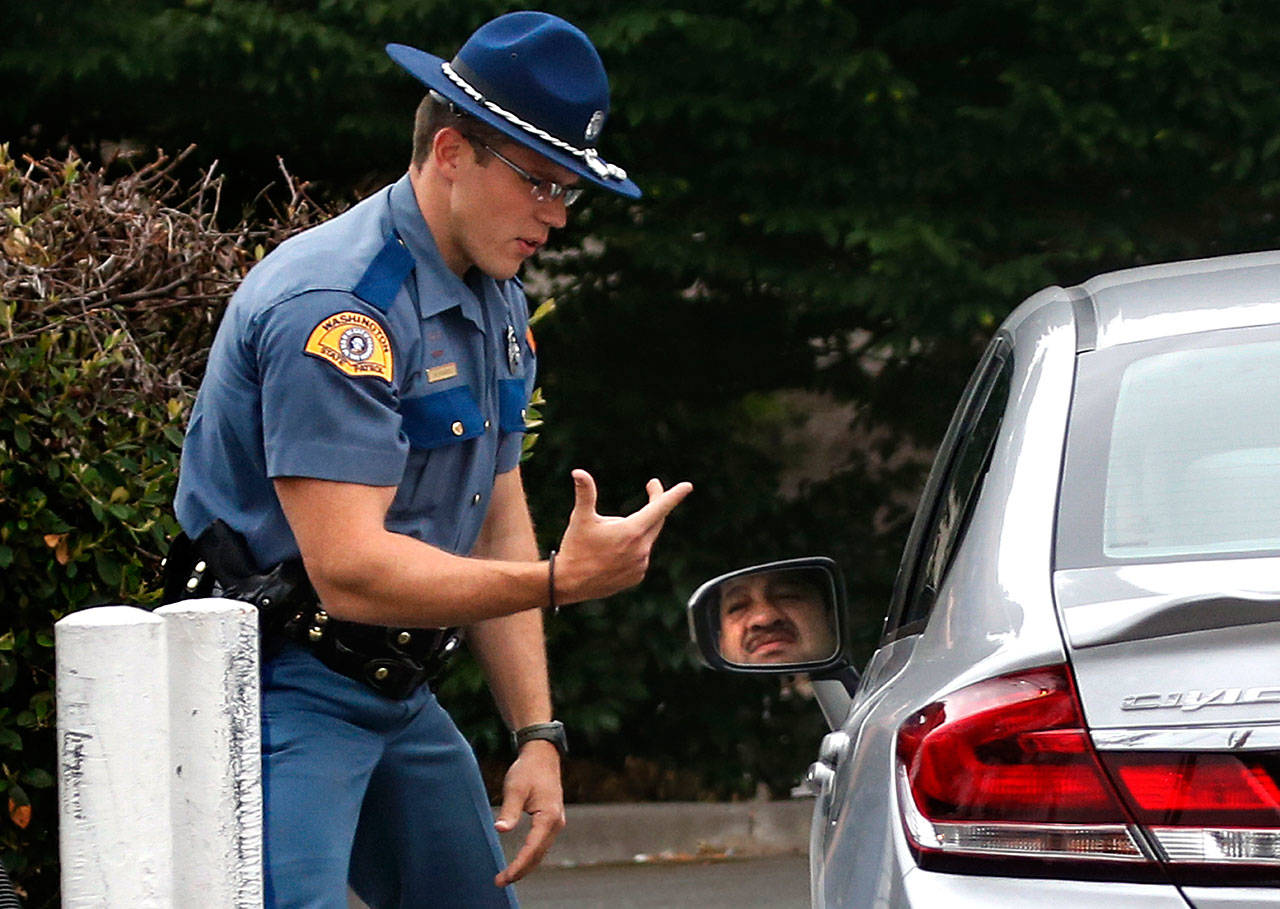By The Herald Editorial Board
Now would be a good time to start developing your phone-ignoring skills while driving.
As of July 23, holding your phone while behind the wheel can earn you a $136 fine for the first violation and a $235 for each subsequent citation within a five-year period.
For a few more days, you can be cited, but only if you’re caught holding your phone to your ear or if you’re observed sending or reading a text message unless using a hands-free device.
The new law bars drivers from holding an electronic device capable of wireless communication or electronic data retrieval — in other words, a phone — and using your hand or finger for texting; browsing; taking photos; watching videos; retrieving, reading and sending emails or using other similar apps.
Even if you’re stopped at a light, resist the temptation to check your phone. That counts as an infraction, too. Even when stopped for a light, your attention has to be on the road around you, for example, watching for that pedestrian crossing the street with his head down and eyes fixed on his phone.
The new law allows “minimal use” of a finger to start or stop a function, such as a map application. Use of mounted phones equipped with hands-free technology are allowed. It also exempts two-way radio use, such as a citizens’ band radio.
Drivers should expect a little time to adjust, but that’s going to be up to police, deputies and state troopers for starters. The state’s Traffic Safety Commission is recommending officers issue warnings for the first six months once the law takes effect, but officers have the discretion to issue either a warning or a citation, according to a recent report in The News Tribune.
But that six months is a much shorter period than lawmakers intended. As passed, the law would not have gone into effect until Jan. 1, 2019. Gov. Jay Inslee wisely vetoed that provision in the law when he signed it, returning its implementation to the standard 90 days after passage. Giving drivers time to adjust to a new law makes sense, but waiting more than two years was unnecessary and would have delayed a safety measure that should help save lives and decrease injuries.
And while the emphasis is on phone use, other instances of distracted driving, such as smoking, eating and grooming, also can result in a $99 ticket, although a citation for “dangerously distracted” driving is considered a secondary offense, meaning a motorist has to be stopped for a separate infraction, such as speeding or not using a seat belt.
The new infraction for phone use while driving has been given the name of “electronics DUI,” comparing it to driving while intoxicated, which should help make the point of how serious traffic safety and law enforcement officials consider distracted driving, especially that using cellphones.
Washington’s Target Zero traffic safety campaign notes state statistics that showed fatalities from distracted driving increased 32 percent from 2014 to 2015; 71 percent of distracted drivers were using phones behind the wheel; and 1 in 4 crashes involved cell phone use just prior to the wreck.
Last year 20 percent of the state’s deadly crashes were tied to distracted driving. A study by the state’s Traffic Safety Commission further found that texting can raise a driver’s risk of causing an accident 23 times over.
While traffic safety studies are showing a decrease in use of hand-held phones in states where it’s banned, the Association for the Advancement of Automotive Medicine, affiliated with the National Institutes of Health, found conflicting results in a 2014 review of 11 studies of the effectiveness of bans of hand-held phones in reducing crashes. It suggested further research was needed.
The quicker start to the new law should help state and national traffic safety officials track its effectiveness and show what adjustments could be made if necessary.
Regardless, drivers should take the responsibility to stow their phone in the glovebox or use a hands-free device if necessary and resist the urge to answer a phone call or text ping when behind the wheel.
Talk to us
> Give us your news tips.
> Send us a letter to the editor.
> More Herald contact information.

























